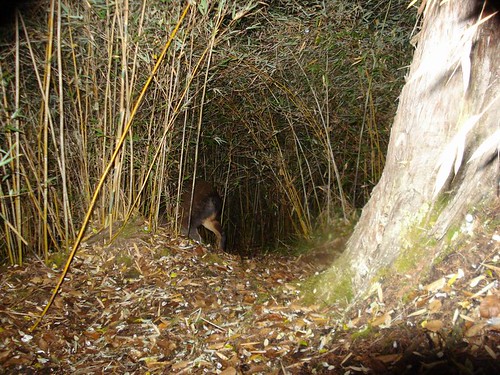, originally uploaded by Rod the Rabid Rodent.
More often than never, geranium essential oil is used for its crushed leaf effect and fresh herbaceous qualities. As mentioned earlier, the presence of menthone and isomenthone renders geranium leaf oil’s freshness and minty character. Linalol makes it a little similar to lavender, and geranium overall is often considered an herbaceous and leafy raw material. In addition to that, the citrusy elements (i.e.: limonene) make it especially favourable in masculine fragrances.
You’ll find geranium in many masculines for men, though rarely will it appear in the name of the scent (the days of Geranium Water are long gone!) or as a major theme. Geranium can be find in classi fougeres such as Azzaro and Canoe, but also in more modern ones such as Cool Water, and the new emerging classification of fougeres for women, beginning with Sarah Jessica Parker’s quirky Covet (where it’s paired with cocoa, citrus and sharp florals to produce a “fougere on estrogen”) and Deseo for women (it smells more like a fougere than the mossless “Chypre” its supposed to be).
In Fougeres, geranium is mostly used for bouqueting the composition, adding the roundness that florals such as rose and jasmine are usually utilized for in “feminine” scents; because while it does provide a similar effect, it is also far less expensive, as well as has that edge of being herbaceous and leafy, preventing it from being too flowery for a man to wear (even though the distinction of florals being feminine is relatively new even in the Western world).
In l’Herbe Rouge I’ve used geranium for exactly that purpose – it’s a fougere composition, yet I wanted to use something to create harmony among the mossy, earthy base (oakmoss, hay, patchouli, vetiver) and the crisp, sharp lavender and juniper top notes. It seems to work really well alongside the leafy lemongrass as well as the spicy clove heart notes.
In the Bois d’Hiver candle, we replaced the rose with rose geranium (for economic purposes – rose otto would make the candle prohibitively expensive, and even the less expensive rose absolute still comes at an outrageous price). In that context, it does well, even though I don’t know about using it in the perfume formulation. I think the florals make it really rich (Bois d’Hiver has rose otto, jasmine and orange blossom).
For the purpose of researching geranium, I’m now doing an experiment replacing rose geranium in a few of my more “masculine” scents instead of the rose, i.e.: Democracy and Rainforest in particular. I think these two might actually benefit from the crispness of geranium and could do without rose’s overwhelming complexity. In Democracy it seemed to have worked fine so far, with half the amount that I usually use for rose otto. Economic indeed.
These days I’m working on a geranium perfume. My main challenge is to give geranium the centre of the stage. I’ve started with a version that is leafy-green and a littly minty. Rather than pretend the herbaceous and leafy green aspects are not there and try to mask them, I’m attempting to bring them out by using several geranium kinds (Madagascan, Morrocan, Egyptian and Bourbon), paired with peppermint and rosemary to accentuate the minty-herbaceouse qualities, lemon and grapefruit to highlight the citrusy aspects, and vetiver and tobacco base notes to support the woody dry out of geranium oil.




